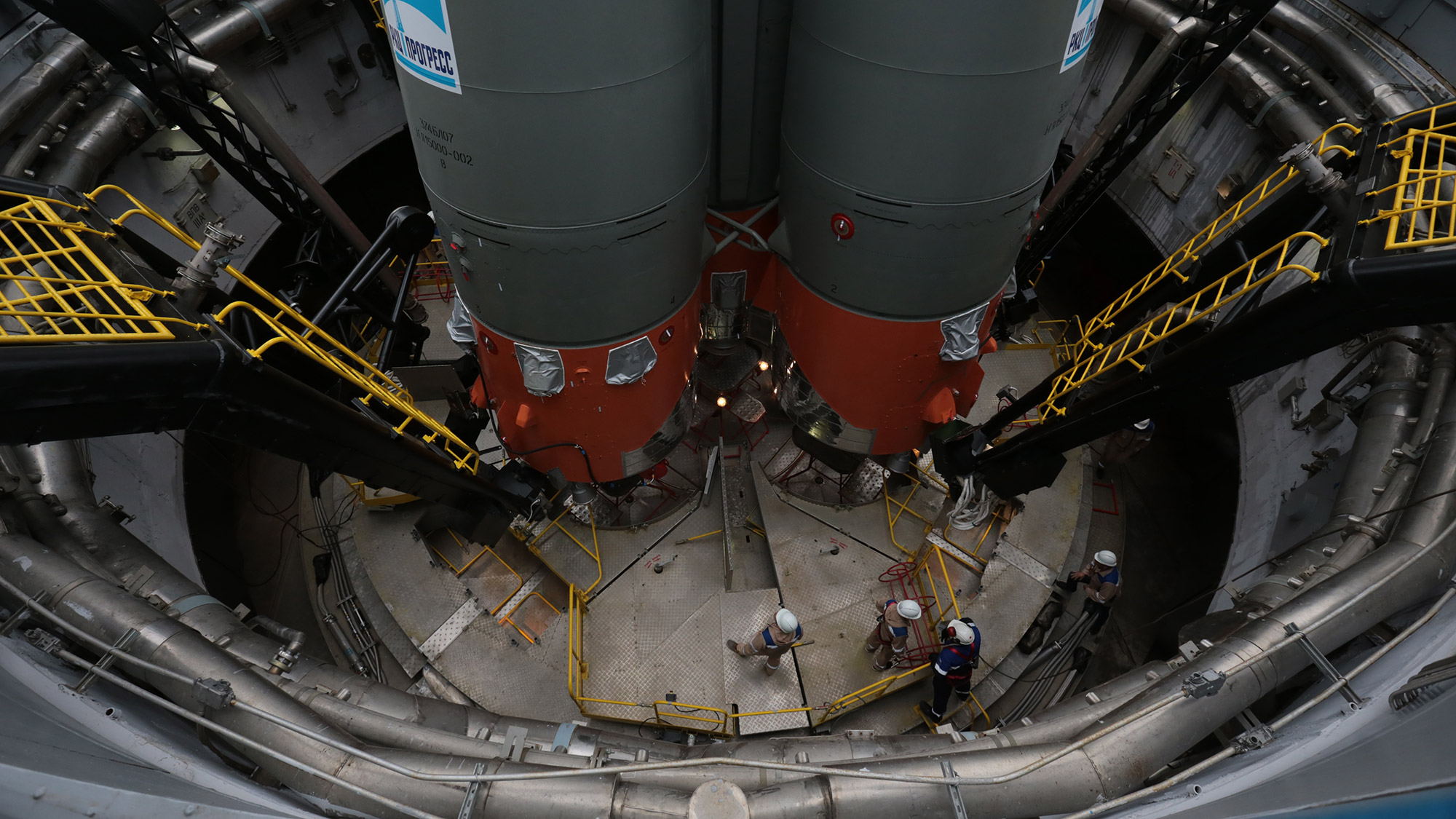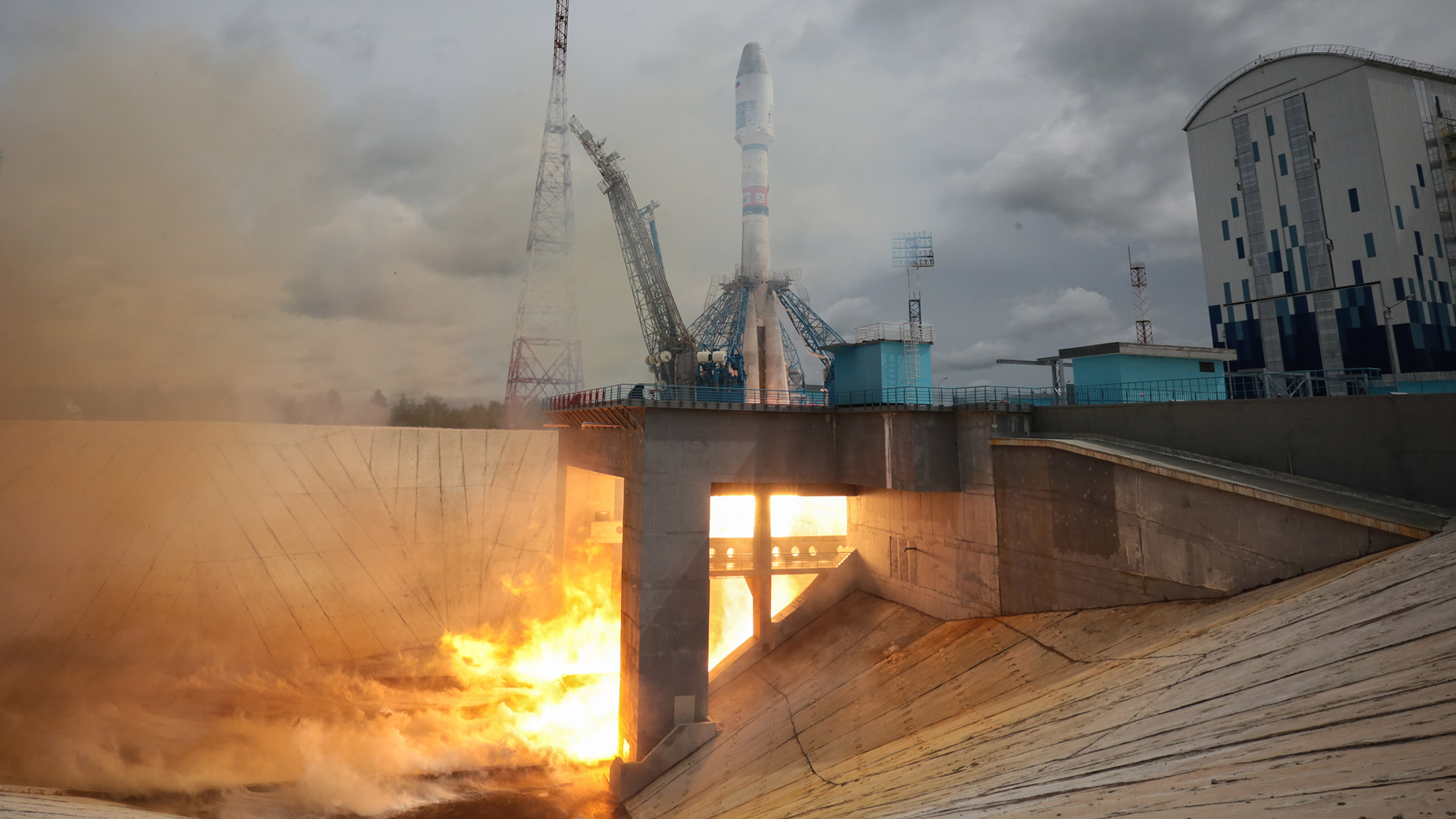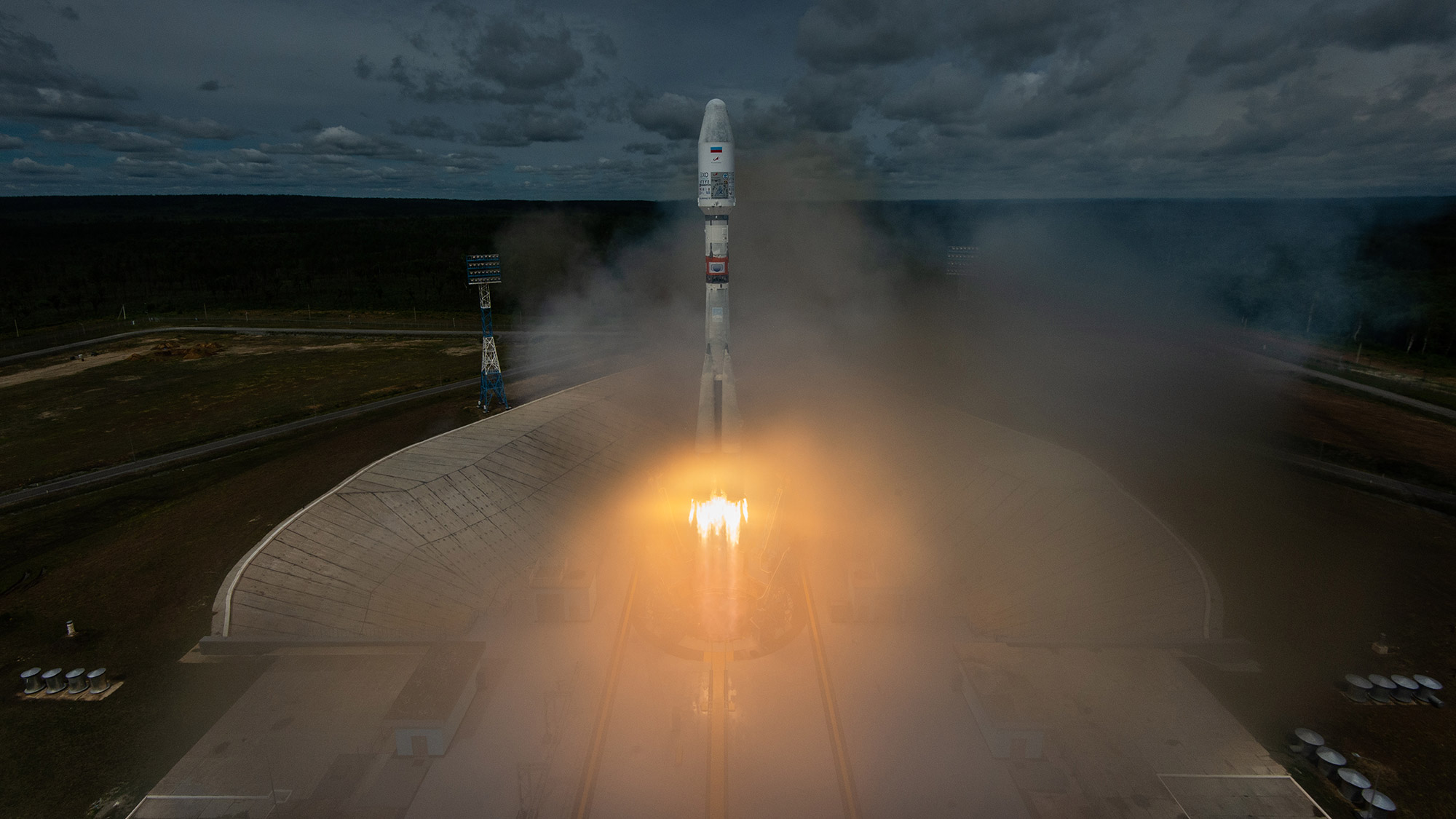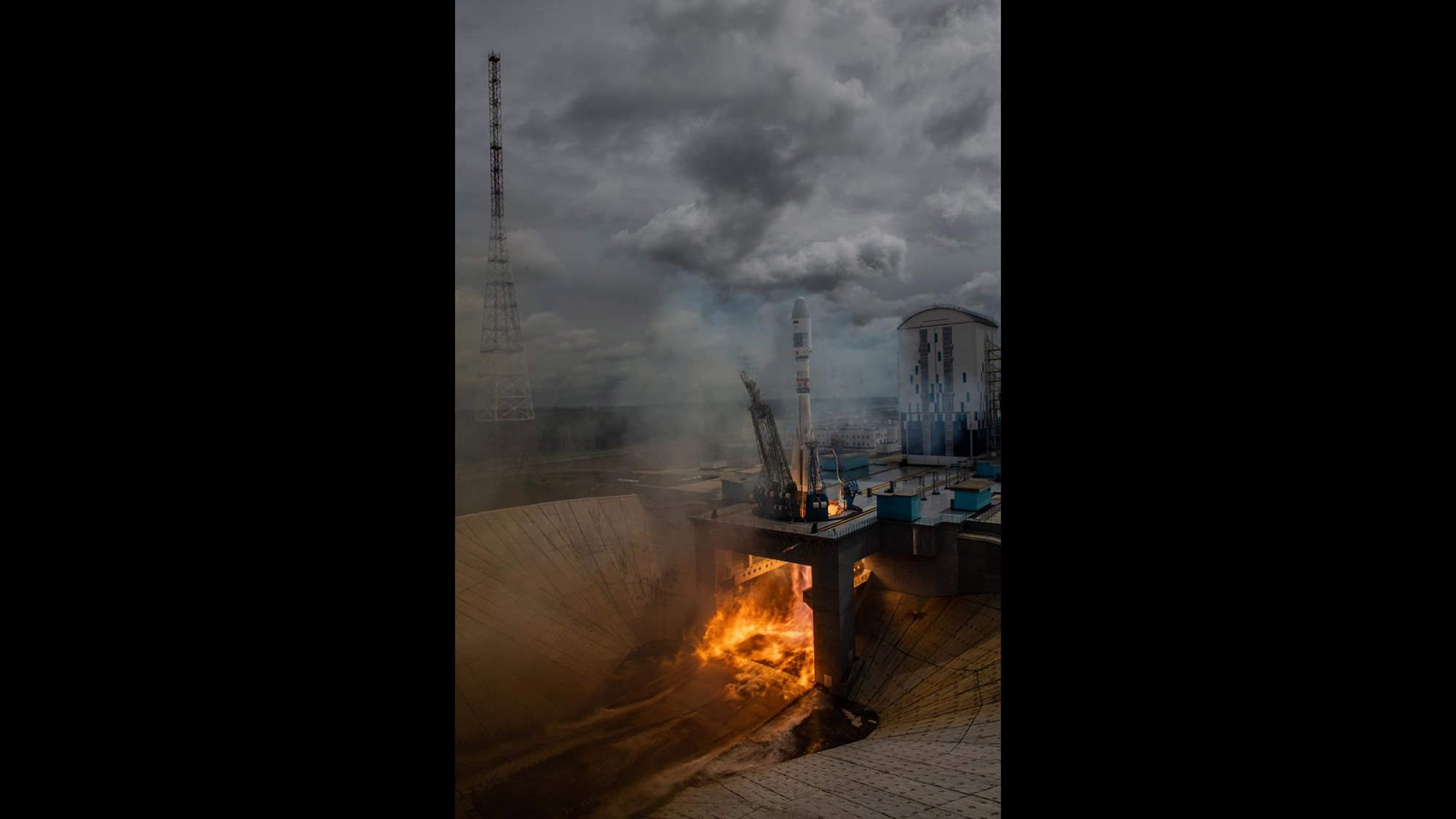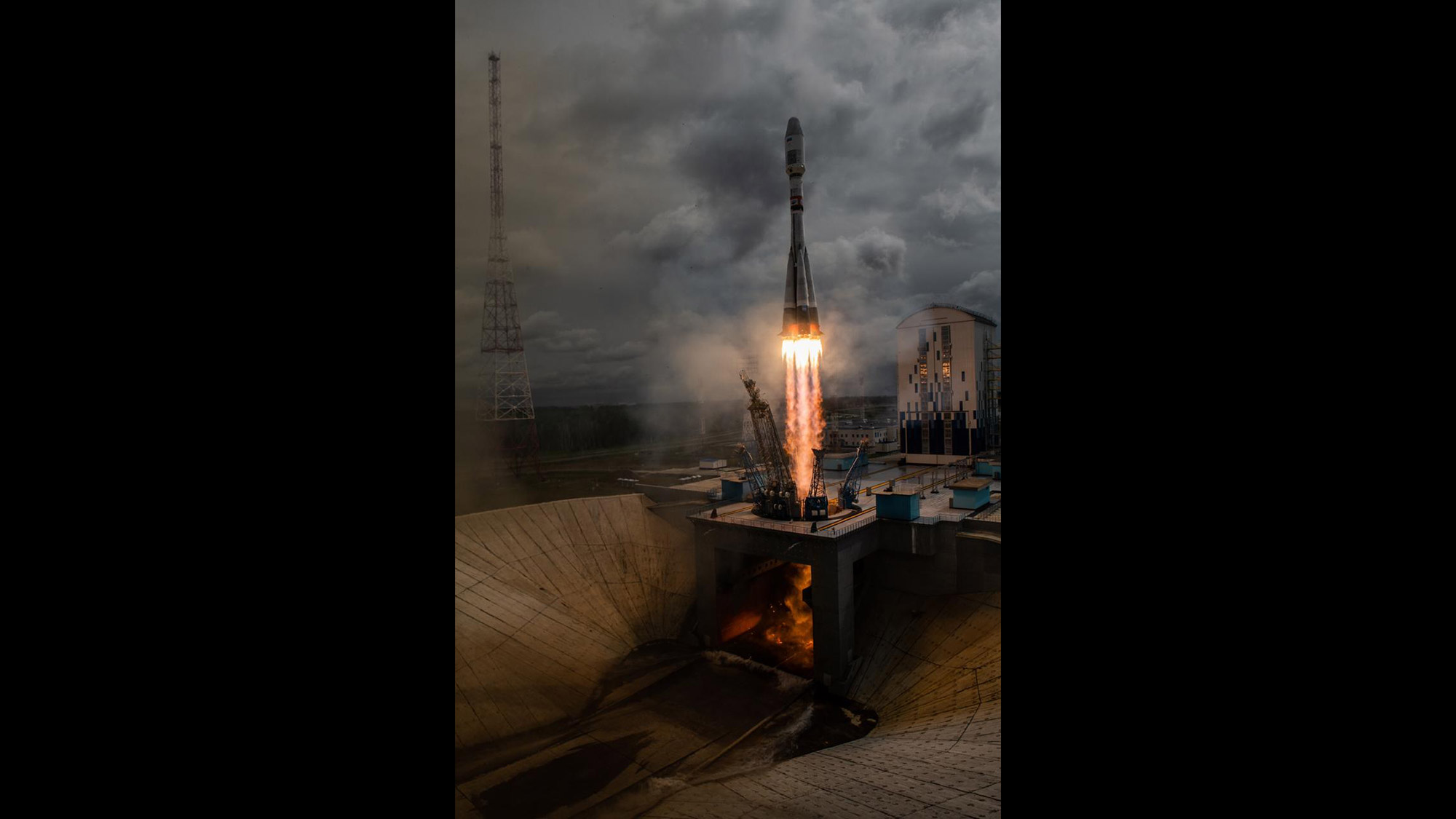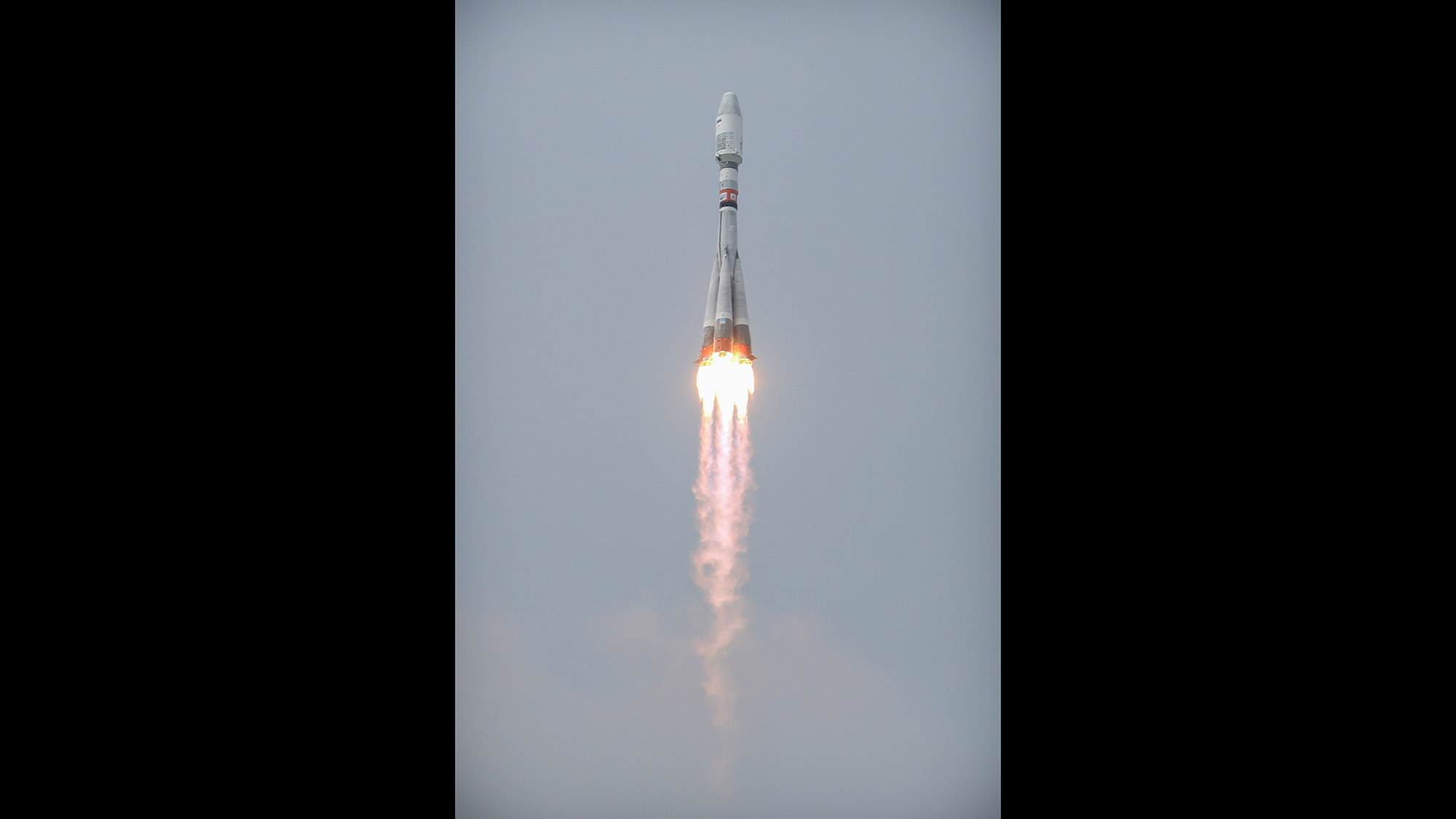In Photos: Soyuz Rocket Launches Russia's Meteor M2-2 Weather Satellite on Rideshare Mission
A total of 33 satellites launched on the Soyuz rocket.
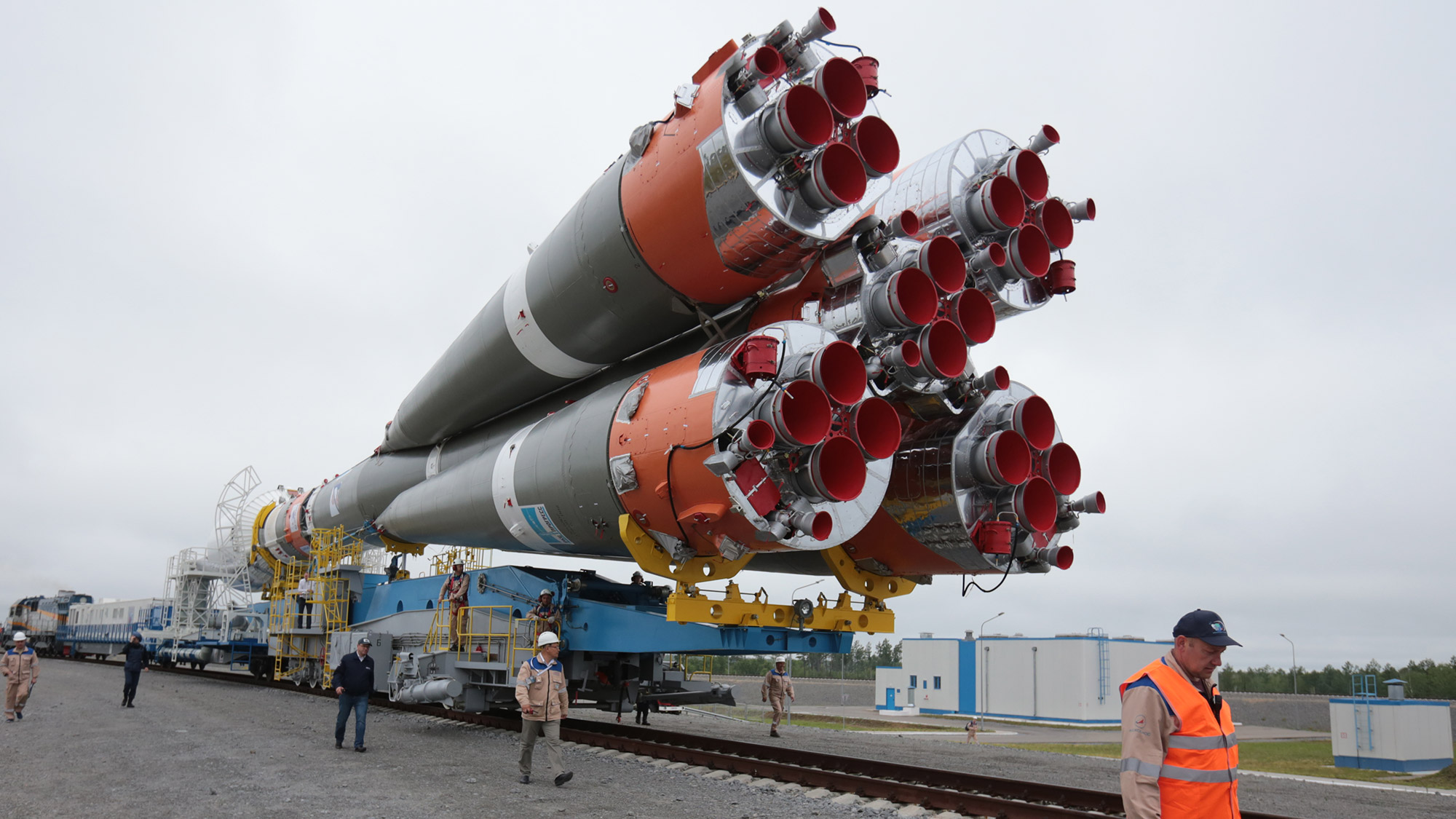
Russia successfully launched its Soyuz rocket on Friday morning (July 5), sending the Meteor M2-2 weather satellite and 32 other smaller satellites into orbit.
The ride-share mission lifted off from the Vostochny Cosmodrome in eastern Russia at 8:41 a.m. local time (1:41 a.m. EDT, or 0541 GMT).
Russia's Meteor M2-2 weather satellite will provide Russian meteorologists with images of clouds, the surface of the Earth, ice cover, as well as humidity and temperature, officials with Roscosmos, Russia's space agency, said in a statement.
The rest of the satellites that launched on the rocket belong to 12 other countries such as the U.S., Germany, France and Sweden, in addition to three Russian cubesats.
Click through this gallery to see photos of the mission!
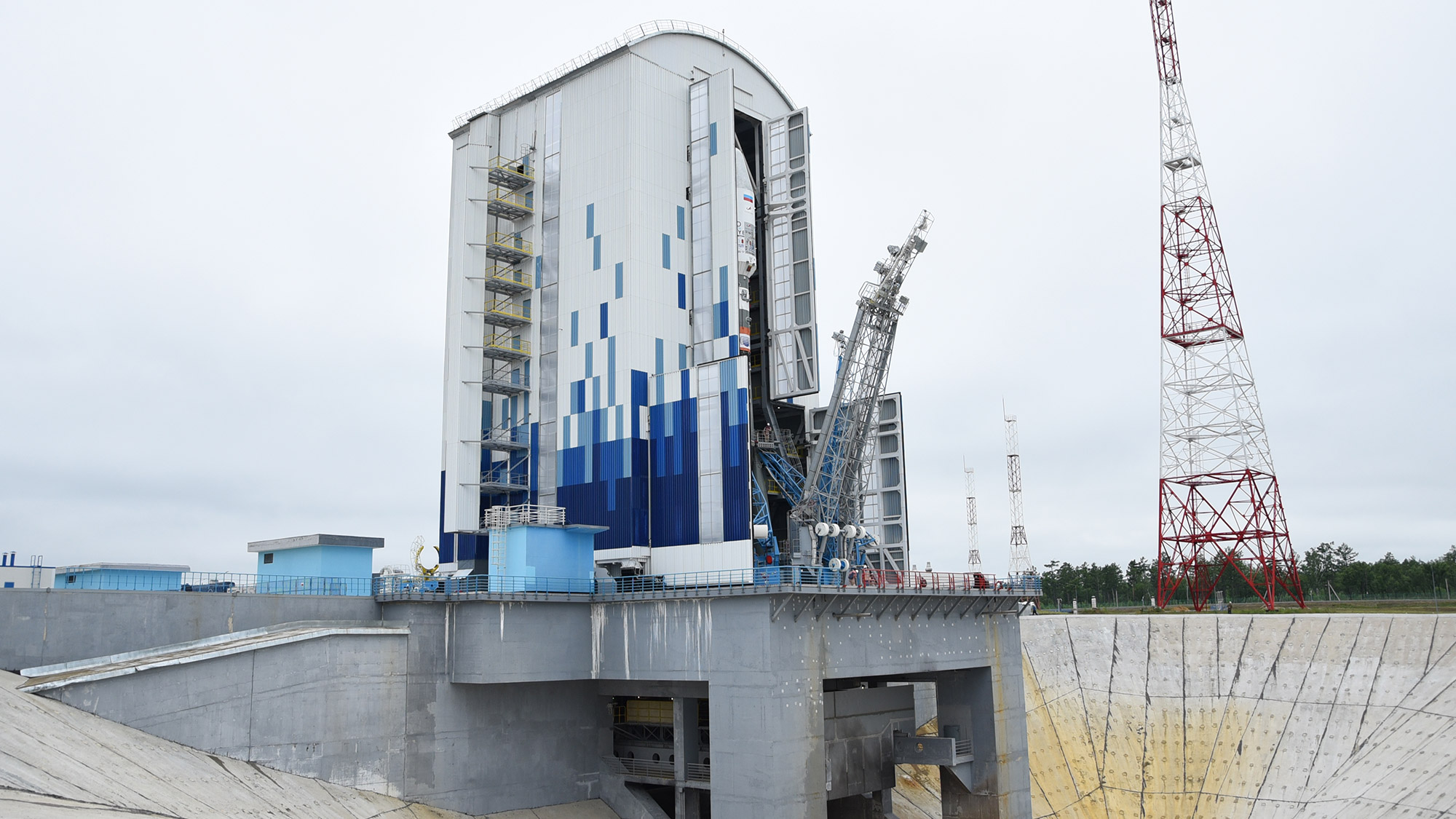
The rocket launched from the Vostochny Cosmodrome, a spaceport in eastern Russia, at 8:41 a.m. local time (1:41 a.m. EDT, or 0541 GMT).

After liftoff, the rocket's Fregat upper stage deployed the various spacecraft into three different near-polar orbits at different altitudes.
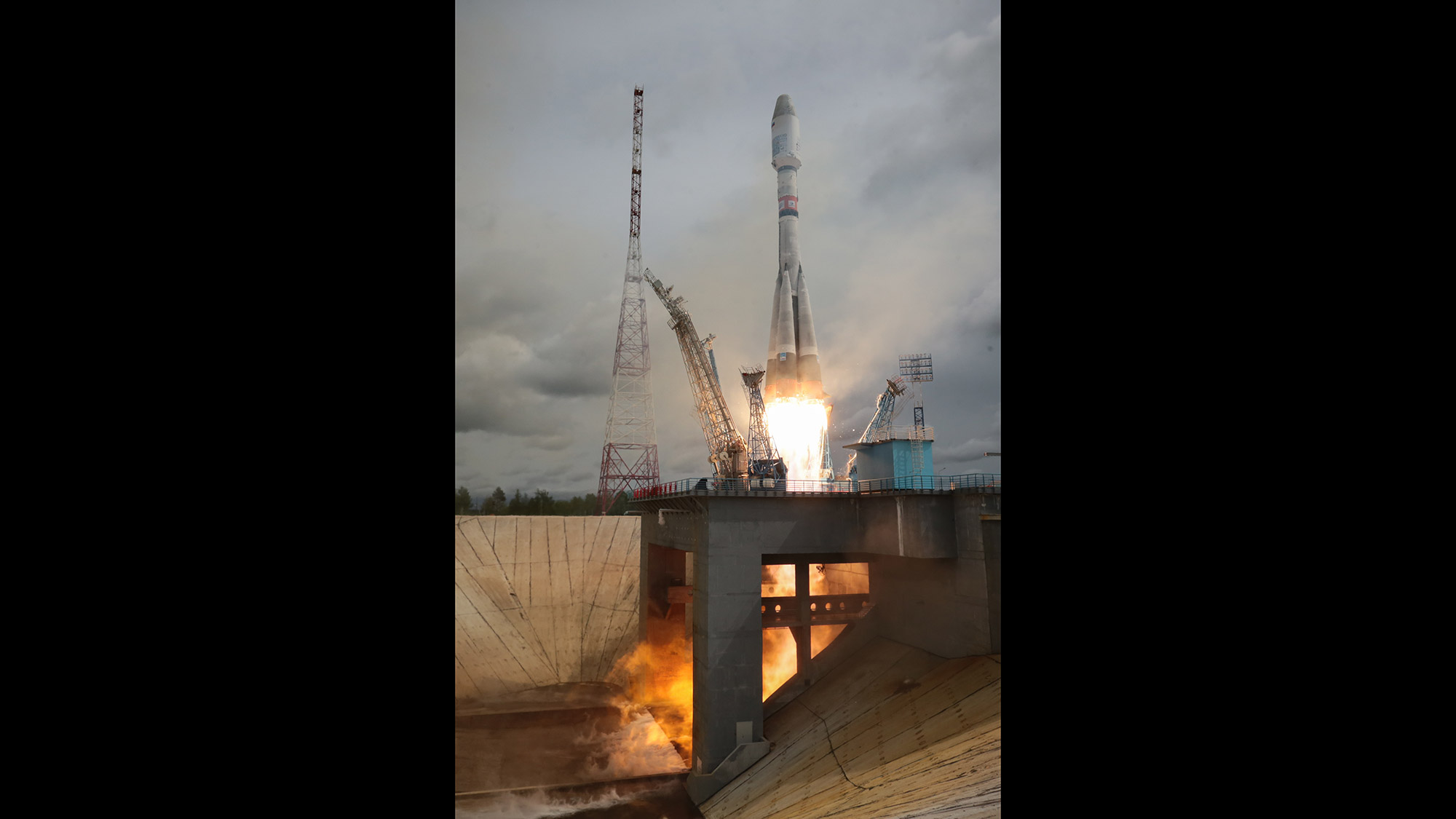
The Meteor M2-2 remote sensing satellite is the third Meteor-M series of Russian weather satellites to be launched into space. The first, Meteor-M No.1 launched in 2009. Its successor, the original Meteor M2, launched in 2014 for a five-year mission. A third satellite, Meteor M2-1, was lost to a launch failure in 2017.
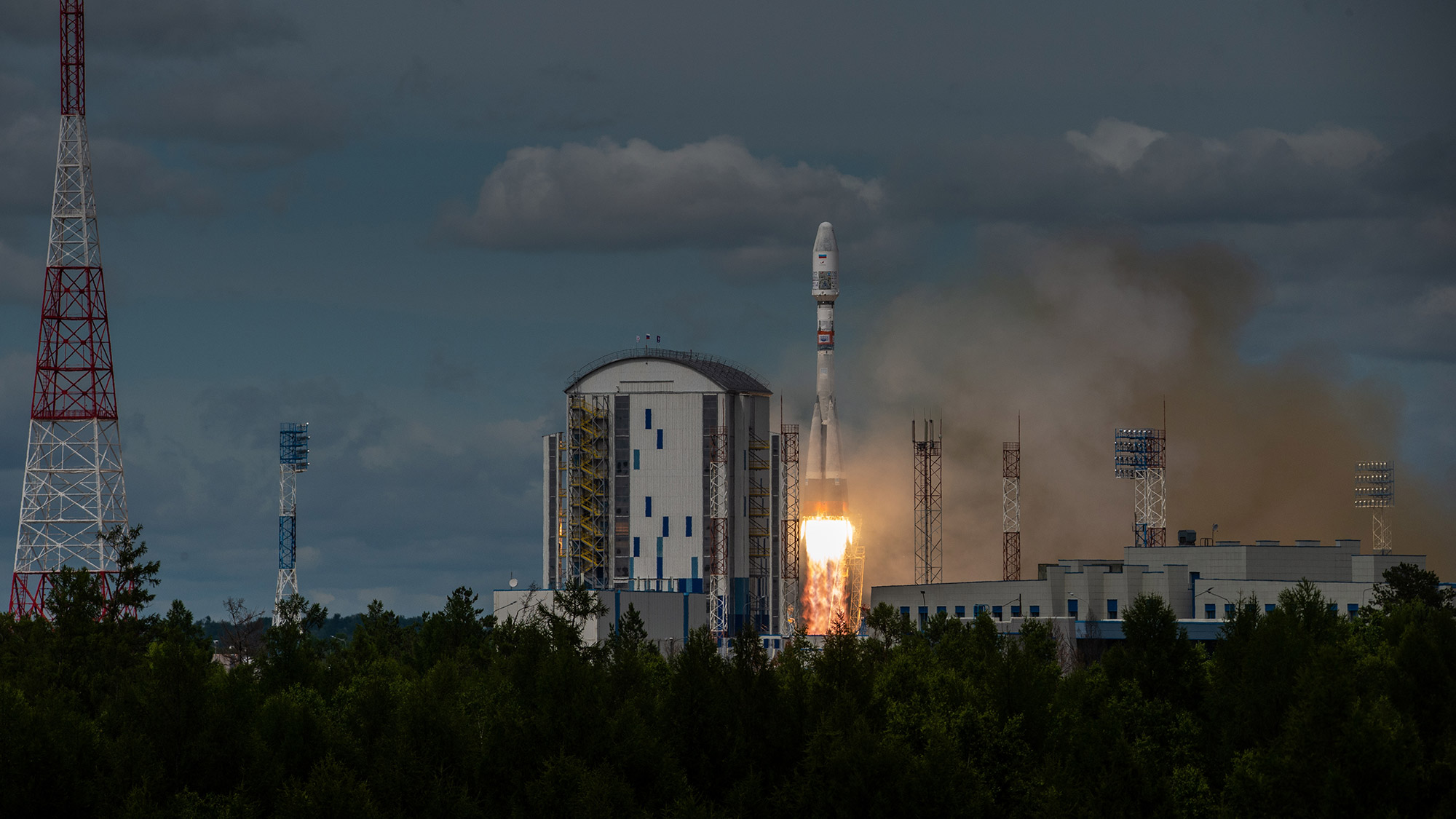
Following its launch, the rocket's upper stage first deployed the Meteor M2-2 satellite to a sun-synchronous orbit at an altitude of 514 miles (828 kilometers) above the Earth. The secondary payloads were deployed afterward into their designated orbits.

Twenty-nine of the other satellites on board belong to different countries such as the U.S., Germany and France.

Passant Rabie is an award-winning journalist from Cairo, Egypt. Rabie moved to New York to pursue a master's degree in science journalism at New York University. She developed a strong passion for all things space, and guiding readers through the mysteries of the local universe. Rabie covers ongoing missions to distant planets and beyond, and breaks down recent discoveries in the world of astrophysics and the latest in ongoing space news. Prior to moving to New York, she spent years writing for independent media outlets across the Middle East and aims to produce accurate coverage of science stories within a regional context.
